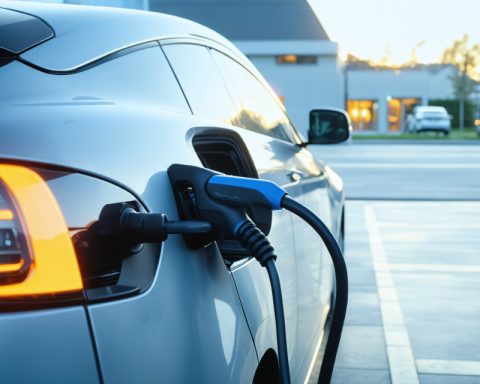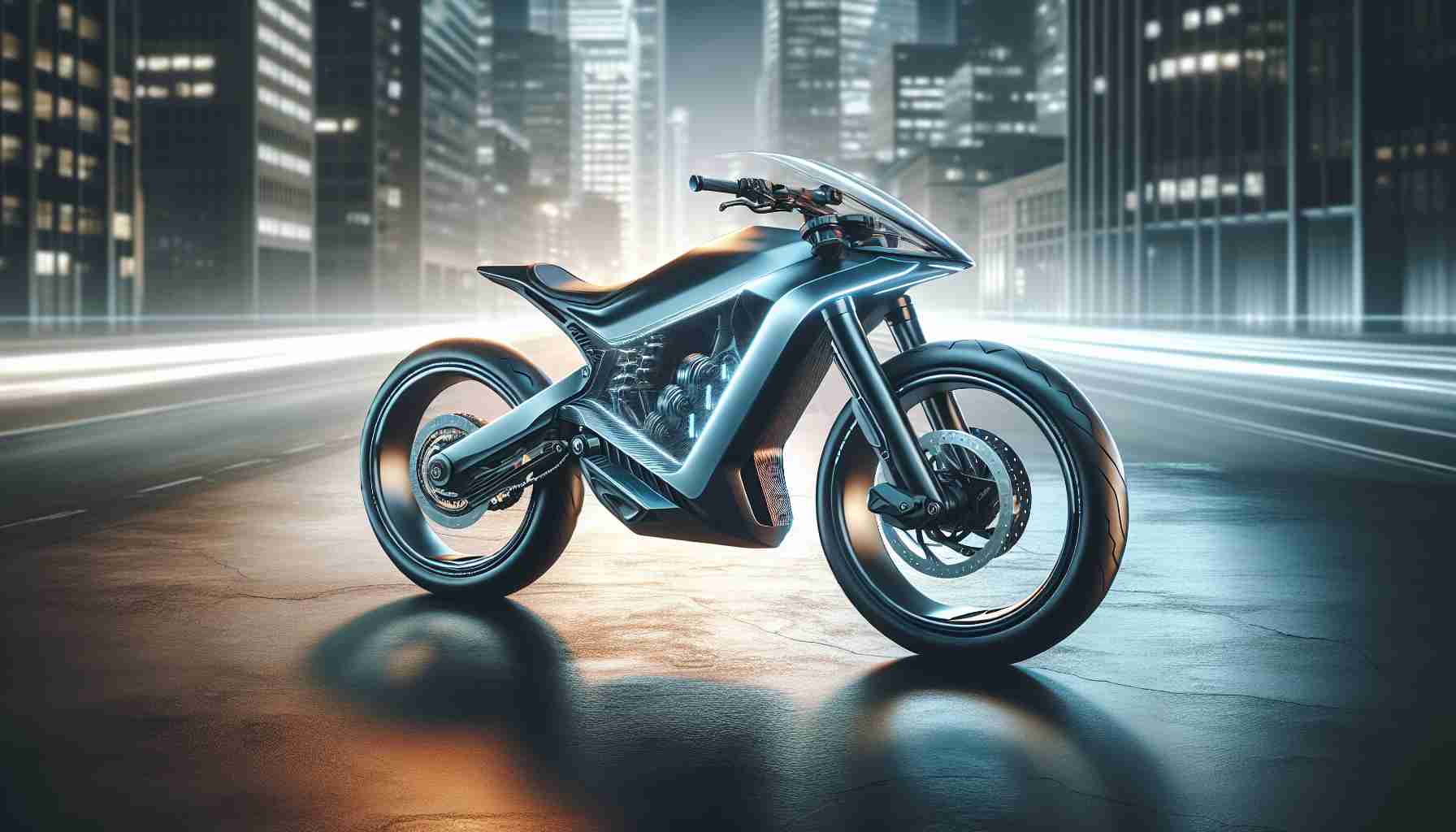In a significant step toward revolutionizing battery technology, SK On has announced groundbreaking findings in the development of all-solid-state batteries (ASSBs). The South Korean company, a leader in battery innovation, has collaborated with top universities to make progress that promises to enhance battery cycle life and streamline manufacturing processes.
Recent research from SK On has been showcased in prominent international journals, underscoring the company’s commitment to advancing next-generation battery solutions. These innovations include the development of ultrafast photonic sintering technology, which is being adapted from traditional circuit board manufacturing for use in ASSBs. This method not only accelerates production but also reduces the need for high-temperature processing, a common barrier in the manufacturing of oxide-based solid electrolytes.
The results were highlighted in a cover article in ACS Energy Letters, emphasizing the creation of a hybrid solid electrolyte that combines photonic sintering-processed oxide materials with gel polymer electrolytes. This innovative approach has shown promising outcomes in battery performance, particularly in terms of longevity.
Additionally, SK On’s investigation into lithium- and manganese-rich layered oxide (LMRO) cathodes is paving the way for more economical battery solutions. This research, published in Advanced Energy Materials, identified key degradation mechanisms while suggesting coatings to enhance performance and lifespan.
Looking ahead, SK On is on track to produce commercial prototypes of polymer-oxide composite and sulfide-based ASSBs by 2027 and 2029, respectively. The completion of a new pilot facility aimed at solid-state battery production is expected in late 2025, further solidifying SK On’s position in the evolving battery landscape.
Implications of Advancements in All-Solid-State Batteries
The recent breakthroughs by SK On in all-solid-state battery (ASSB) technology carry far-reaching implications for society, culture, and the global economy. As the demand for high-performance energy storage solutions intensifies, these developments have the potential to reshape various sectors, drive economic growth, and address critical environmental challenges.
In the context of societal impact, the shift towards ASSBs is set to enhance the performance of electric vehicles (EVs), which are at the forefront of the transition to sustainable transportation. Improved battery life and efficiency will likely accelerate consumer adoption of EVs, making them a more viable option for the average consumer. As more people turn to electric vehicles, there could be a significant reduction in greenhouse gas emissions, contributing positively to climate goals globally. Furthermore, the cultural shift towards sustainability may promote increased public support for clean energy initiatives and infrastructure investments.
On an economic scale, the advancements in battery technology are poised to create new opportunities within the manufacturing sector. By streamlining production processes through innovations like ultrafast photonic sintering, companies can expect reduced costs and faster time-to-market for new battery products. This could foster increased competition among battery manufacturers, driving further innovation while potentially lowering prices for end consumers. Additionally, as more industries adopt ASSBs, the demand for raw materials could see a shift, influencing global supply chains and trade dynamics.
The potential environmental effects cannot be overlooked. While ASSBs promise higher efficiency, they also necessitate a careful examination of the materials involved in their production. The move towards lithium- and manganese-rich layered oxide cathodes could minimize reliance on scarce materials like cobalt, often associated with ethical and environmental challenges. Balancing resource extraction with sustainability will be crucial in the widespread adoption of these new technologies.
Future trends appear promising, with projections of commercial prototypes of ASSBs expected within this decade. This not only underscores a commitment to innovation but also signals a critical moment for the energy storage industry. As technologies mature, we may witness an evolution in energy management systems, potentially leading to decentralized energy solutions that empower consumers and businesses alike to generate, store, and utilize energy more effectively.
In the long term, the significance of these developments could result in a more resilient and efficient global energy landscape. With the ability to efficiently store energy from renewable sources, ASSBs may play a key role in stabilizing grids and facilitating a faster transition to a low-carbon economy. The ongoing collaboration between corporate giants and academia serves as a beacon of progress, driving us closer to a sustainable future. As we look ahead, the advancements made in battery technology by companies like SK On may prove to be a pivotal factor in addressing some of the most pressing challenges facing our world today.
Revolutionizing Energy Storage: The Future of All-Solid-State Batteries
Recent advancements in all-solid-state battery (ASSB) technology, particularly those achieved by SK On, signal a pivotal shift in battery performance and manufacturing efficiency. The evolving landscape of battery technology necessitates a closer examination of these developments, which are primarily rooted in innovative methods and materials.
FAQs About All-Solid-State Batteries
What are all-solid-state batteries?
All-solid-state batteries are energy storage devices that use solid electrolytes instead of liquid ones, offering improved safety, energy density, and longevity compared to traditional lithium-ion batteries.
How does photonic sintering impact battery manufacturing?
Photonic sintering utilizes light to rapidly heat materials, significantly speeding up the sintering process necessary for solid electrolytes. This innovative technique reduces production time and energy consumption, making the manufacturing process more efficient.
How-Tos: Enhancing Battery Lifespan
To maximize the longevity of ASSBs in development, consider the following tips:
– Invest in High-Quality Materials: Utilizing lithium- and manganese-rich layered oxides combined with effective coatings can mitigate degradation and improve lifespan.
– Maintain Optimal Operating Conditions: Monitor environmental conditions such as temperature and humidity, which can significantly affect battery performance.
Pros and Cons of ASSBs
Pros:
– Increased Safety: Solid electrolytes reduce the risk of flammability and leakage associated with liquid electrolytes.
– Higher Energy Density: ASSBs can potentially offer more energy storage capacity in smaller formats, translating to longer battery life for devices.
Cons:
– Manufacturing Challenges: The transition to solid-state technologies involves overcoming significant production hurdles, including material compatibility and large-scale manufacturing practices.
– Higher Initial Costs: The technology can initially be more expensive than conventional lithium-ion solutions, affecting market adoption rates.
Predictions for the Future of ASSBs
Experts predict that by 2030, all-solid-state batteries will begin to dominate the electric vehicle market, driven by both advancements in technology and consumer demand for safer, longer-lasting energy storage solutions. SK On’s investment in solid-state battery development foreshadows a competitive landscape where companies prioritize innovation to meet this demand.
Related Insights
A recent study published by the Journal of Power Sources emphasizes the environmental impact of switching to ASSB technology, highlighting a potential reduction in carbon emissions from electric vehicles due to the improved lifecycle of solid-state batteries. As the industry moves towards sustainability, ASSBs could play a critical role in achieving greener energy storage solutions.
For more detailed insights on battery innovations, refer to the article on Journal of Power Sources for the latest research findings.
As the foundation of SK On’s research lays the groundwork for revolutionary advancements in energy storage, we can expect exciting developments that will shape the future of not only electric vehicles but also portable electronics and renewable energy systems.












